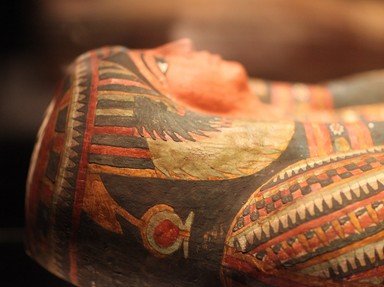Quiz Answer Key and Fun Facts
1. It appears that Pharaoh Seqenenre Tao met a rather violent end, but it is uncertain if it happened in battle or by some other means. It is certain, however, that he was pharaoh at the same time another group had established a kingdom at Avaris, in the Nile Delta. What was the name of this invader to ancient Egypt?
2. Ahmose I, the son of Seqenenre Tao, drove the invaders out of Egypt, and established a new dynasty. In fact, it was the same dynasty to which the famous King Tutankhamun belonged. Name the dynasty!
3. The mummy of Amenhotep I remains one of the few found in the ancient cache that has remained unwrapped to this very day. Why have archaeologists chosen to leave the cartonnage intact?
4. Thutmose I is the first confirmed pharaoh to have built a tomb for himself in which prestigious location?
5. The reign of Pharaoh Thutmose II is overshadowed by his famous wife, who apparently ruled Egypt in her own right after his death. Who was the wife of Thutmose II?
6. For which of the following contributions to ancient Egypt is Thutmose III best known?
7. Ramses I was the founder of a new dynasty in ancient Egypt. How did he become pharaoh?
8. Seti I, the son of Ramses I, was able to recapture which Hittite stronghold, which had been lost to the ancient Egyptians during the time of Akhenaten?
9. Ramses II succeeded his father, Seti I, as pharaoh, and is remembered in history as Ramses the Great, builder of empires and monumental structures. By what name did the ancient Egyptians remember him?
10. By what distinction is Pharaoh Ramses III known?
Source: Author
ponycargirl
This quiz was reviewed by FunTrivia editor
bloomsby before going online.
Any errors found in FunTrivia content are routinely corrected through our feedback system.
